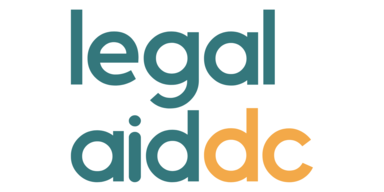
A recent report from the National Consumer Law Center (NCLC) examines the racial health and wealth gaps and highlights the impact of medical debt on Black families. The report provides a sobering explanation of how disparities in healthcare and medical debt are a result of underlying, pervasive racial inequality. Unfortunately, these issues and impacts are all too familiar to District residents and Legal Aid’s client community.
The Racial Health Gap
The COVID-19 pandemic has disproportionately affected communities of color, with CDC data showing that Black, Latinx, American Indian and Alaska Native persons in the United States experience higher rates of COVID-19-related illness and death compared to non-Hispanic white persons. The District’s Black residents make up nearly 78% of deaths caused by COVID-19. The NCLC report traces these disparities in health access and outcomes to Jim Crow laws that enforced segregation in all public facilities, including hospitals. The passage of the Civil Rights Act of 1964 and enactment of Medicaid and Medicare ended lawful segregation in hospitals. However, structural racism in healthcare continues to result in disparities in healthcare access, quality, and outcomes.
Though these disparities create major obstacles for households of color, under the Affordable Care Act, the expansion of Medicaid has helped alleviate some of these challenges. A recent study found that low-income parents in states that opted to expand Medicaid had a greater ability to pay off medical bills and experienced less psychological distressors. In 2010, the District chose to expand Medicaid coverage for residents and now, DC’s eligibility limits are “among the most generous in the nation.” One in three District residents are eligible for Medicaid or DC Healthcare Alliance, a healthcare program provided to individuals not eligible for Medicaid.
Still, medical debt is the second most common type of debt collection in the District. With such expansive healthcare coverage, why is this the case? At least part of the answer may lie in residents’ ability to access healthcare benefits. In November 2021, the DC Departments of Human Services and Healthcare Finance rolled out a new benefits platform called District Direct. Applicants are directed to apply and recertify for various public benefits including Medicaid on the website or the mobile app. Unfortunately, the transition to District Direct has not been smooth—some individuals are unable to access the platform at all due to language barriers.
Not only can the process of accessing healthcare be difficult, but poor administration of benefits can also discourage residents from seeking healthcare services. For example, last year thousands of Alliance beneficiaries were erroneously terminated from their healthcare benefits without notice. These types of failures can lead to negative health outcomes and much more.
The Racial Wealth Gap
Disparities in healthcare access, quality, and outcomes can also lead to disparate impacts of medical debt. Medical debt disproportionately affects Black households - nationally, 27% percent of Black households report having medical debt, compared to 17.2% of white non-Hispanic households. And even more broadly, because of structural racism in hiring and lending, Black households are still more likely to have lower incomes and lack access to wealth-building vehicles like homeownership, compared to white households. A report on the racial wealth gap in DC describes the stark wealth disparities between the District’s white and Black residents – white households have a net worth 81 times greater than Black households; the median white resident’s income is three times the median Black resident’s income; and over 25% of Black residents experience poverty, compared to 5.9% of DC’s white residents. These wealth disparities mean medical bills are more likely to create financial hardships for Black families than for white families.
The NCLC report offers a range of recommendations to tackle the medical debt crisis, starting with reforms to state and federal policies as an important first step in closing the racial health and wealth gaps. One of the primary NCLC recommendations is that policymakers strengthen protections against aggressive debt collection. The District took an important step toward that goal last year by passing emergency and temporary amendments to the District’s obsolete debt collection law, which protects consumers against unfair and abusive debt collection and now covers medical debt for the first time. The District must now make those protections permanent.
While these legislative changes do not get to the root causes of racial disparities in debt collection, the District’s Racial Equity Impact Assessment of the bill is an encouraging sign that reforms like this can move the needle in the right direction.




